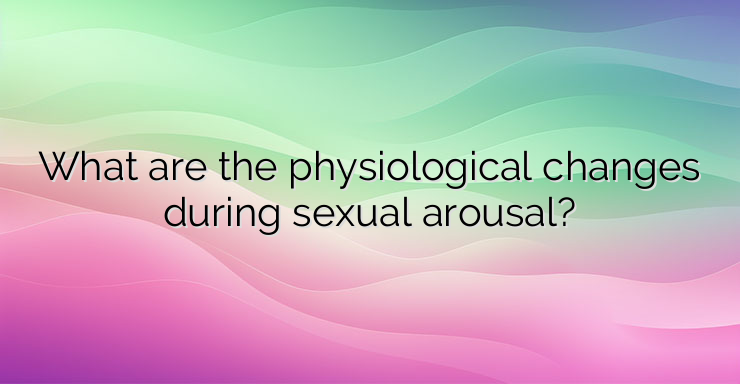Before and during the sexual act, specific physiological changes occur in the body of the man and the woman, which, in addition to allowing the initiation and maintenance of the act, also have a longer-term significance for the overall emotional and health status. Today, the primary importance of a fulfilling sex life for the mental balance and health of the individual has been conclusively proven. What changes occur in the body and brain and how do they make us healthy and happy? In women, sexual arousal begins with an increase in vaginal lubrication, lengthening of the vagina and increased blood filling of the external genital organs. Increased arousal leads to enlargement of the clitoris and reddening of the skin around the genitals. Changes in the internal organs, in addition to the well-known acceleration of the pulse and increase in blood pressure, also include a change in the shape of the vagina and the position of the uterus in the pelvis. There is also an increase in blood flow in the breasts, their sensitivity, especially in the nipples. Pupil dilation occurs in both sexes. With age, physiological changes occur that make sexual arousal slower and more difficult, but achieving orgasm easier. With advancing age, libido and natural lubrication decrease, the uterine muscles weaken, which leads to the slower reaching of orgasm and its faster passing. This is attributed to declining estrogen levels, while more frequent orgasms and multiple orgasms are a result of experience rather than physiology. However, all this happens under the control of the central nervous system. Precise measurements of the brain’s electrical activity show that during sexual arousal, areas of the brain called the amygdala are activated. As part of the limbic system, they have been found to be involved in the processing of memory and emotions. The limbic system is associated with the mental aspects of physiological functions. This goes some way to explaining the relationship between sex and emotions and mental state, but not in great detail—the two have been found to be related, but not in what way. Future advances in neuroscience are expected to shed more light on this issue. In men, changes during sexual arousal are driven by the same areas of the brain as in women. The changes are largely analogous to those in women – blood filling the external genital organs and shortening of the pelvic muscles. NEWS_MORE_BOX Characteristic of arousal in men, however, is the stronger activation of the hypothalamus and amygdala nuclei by visual stimuli, indicating that there are some differences in the functioning of these structures in men and women. This may partly explain why arousal during sleep is more common in men. Also interesting about the male orgasm is that it is followed by an increased release of oxytocin and prolactin, which are thought to create the feeling of relaxation and satisfaction after sex in the man. This is very special because oxytocin is a hormone thatwhich stimulates labor contractions of the uterus, and prolactin stimulates lactation. Important psychoactive effects have also been established for them. First of all, it is the activation of the maternal instinct in the parturient, mostly by oxytocin. It turns out that they matter to men’s behavior as well. Oxytocin is believed to stimulate a man’s attachment to his partner. It is possible that these hormones have been charged by evolution with much greater functions than purely physiological ones. Perhaps our knowledge and understanding of them is incomplete. Oxytocin may turn out to be not just a “pregnancy hormone” as it is often called, but a hormone that promotes the preservation and continuation of the entire species by stimulating the attachment of mother to child and male to female.


Leave a Reply